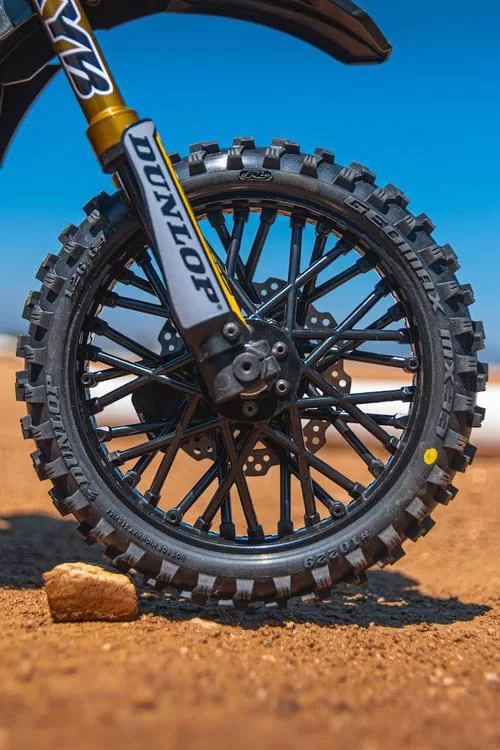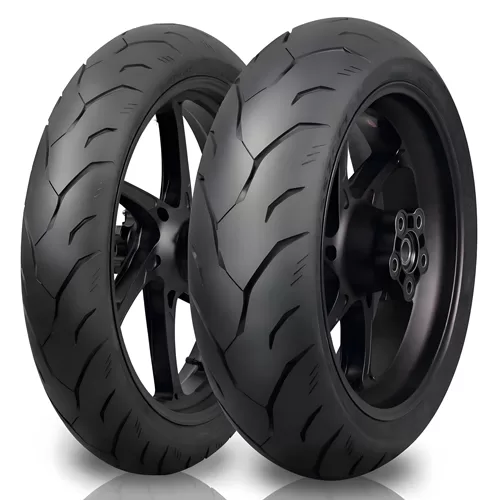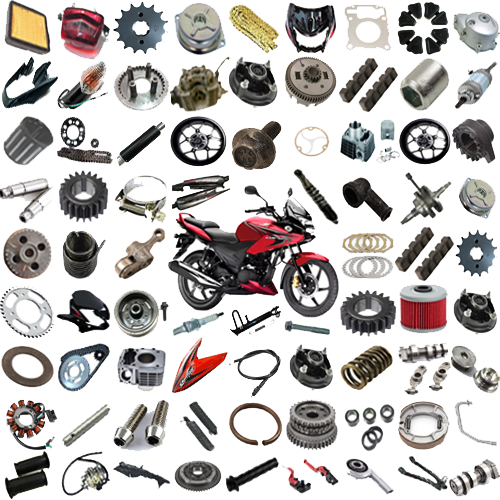Off-road tires serve as the interpreters of the dialogue between riders and the earth. Each tread pattern represents a battle of material mechanics: when silicon-based molecules enhance their wear-resistant properties against gravel, and honeycomb structures alleviate stress during sharp turns, tires have evolved beyond mere rubber products into sophisticated terrain-adaptation systems.
Motocross is an extreme interaction between tires and terrain. Every contact with the ground deciphers the terrain’s code through material design: hard-textured tires increase ground contact area for better grip, deep-tread patterns on sandy surfaces provide traction and force distribution, while open grooves on muddy terrain accelerate sludge discharge. Misaligned treads are akin to inserting the wrong key into a lock—ineffective engagement with the terrain leads to increased fuel consumption due to sinking, unbalanced stress causing premature tire fatigue, and structural damage from frequent deformation.
Top-tier off-road tires harness self-adaptation as their technological core. Composite materials and advanced texture topologies enable a seamless transition from rigidity to flexibility across varying terrains, ultimately crafting the survival epic of inorganic life within the critical parameters of tearing and gripping.

The wear resistance of motorcycle tires fundamentally hinges on the interplay of materials, patterns, and structures. Road tires require relatively hard rubber compounds to withstand asphalt friction, yet excessive hardness may lead to slipping. To address this, some manufacturers employ hard rubber in the central portion of the tire while incorporating softer materials on the sides to maintain grip during turns.
Tire tread depth must be appropriately calibrated. Fine grooves commonly found in commuter tires distribute pressure evenly, whereas the large treads of off-road tires excel at rapid mud drainage but wear out faster on hard surfaces. A hidden innovation lies in the inclusion of anti-fracture reinforcing ribs within the cord layer, particularly in rear tires where forces are concentrated. Riders should avoid abrupt braking or aggressive acceleration, regularly check tire pressure, and promptly rotate tires if significant wear is detected. A well-maintained tire can extend its lifespan by thousands of kilometers on mountain roads.
Motorcycle tire properties dynamically adapt to varying terrains. Highway tires feature continuous rib structures in the central region, combined with medium-hardness rubber formulations, ensuring reliable grip on asphalt. Off-road tires utilize deep grooves and angled shoulder designs to prevent dirt accumulation on the tread. Hybrid terrain tires incorporate differentiated tread layouts for front and rear wheels: front wheels prioritize steering stability, while rear wheels emphasize traction efficiency. Gradient tread hardness, coupled with dynamic balance technology, accommodates diverse road surface requirements. Internally, tires adopt differentiated reinforcement layers; road tires rely on cross-woven steel cord schemes, while all-terrain tires use multiple layers of high-strength fiber cord fabric to control shape deformation.

Proper maintenance is crucial for tire longevity. Removing debris from the tread prevents cutting materials from penetrating the inner tire layers. Avoid exposing tires to direct sunlight to mitigate ultraviolet-induced rubber degradation.
MPM brand tires fulfill every fantasy about intelligent tires—from scorching sand dunes to frigid rocky plains, MPM tires act as the ultimate medium for riders to engage in a precise dialogue with the earth. True off-road philosophy transforms every contact between rubber and soil into a meticulously premeditated interaction on the battlefield.
Join our mailing list to be the first one to know more new parts release and marketing info. Stay informed!


We will contact you within 1 working day, please pay attention to the email “wholesale@mpm-motorsports.com”
Comments